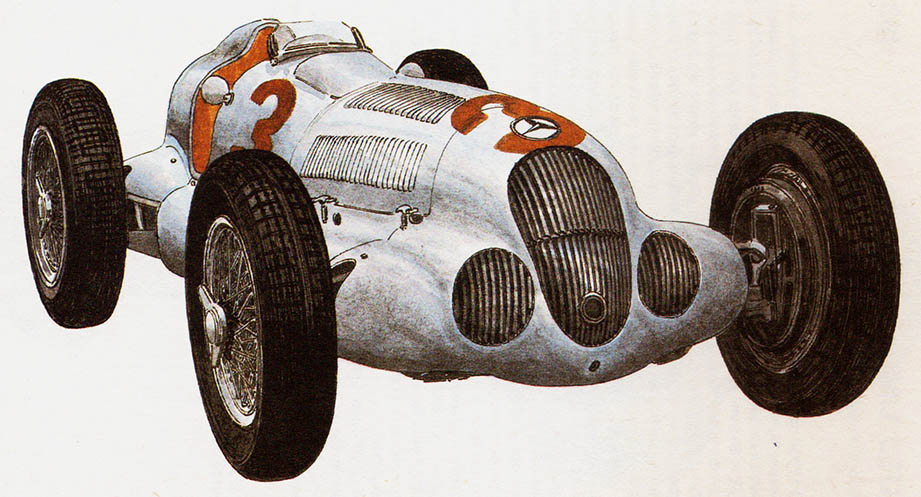MERCEDES-BENZ W 125 – year 1937
Daimler Benz AG, Stuttgart, Germany.
W 1937 In the year, the main prizes in the Grand Prix races went back to Auto Union and Mercedes-Benz. This season, a new Mercedes model was presented, being a modified version of the model 25, in which, first of all, its driving characteristics have been improved. The new Mercedes, marked with a number 125, got the eight-cylinder M 125 with cylinder diameter increased to 94 mm, thanks to which the capacity was achieved 5660 cm3 and power 475,5 kW (646 KM) by 5800 RPM. There were two intake and two exhaust valves in each cylinder, arranged at an angle of 60 ° to each other. They were driven by two camshafts. Roots compressor position has been changed, positioning it between the carburetor and engine. The mixture of alcohol and gasoline was compressed under pressure 180 kPa. The gearbox and the differential formed a block in the de Dion rigid rear axle. The skid of the rear wheels when cornering was limited by the ZF differential, which transmitted power via transverse articulated shafts to the rear wheels. Rear wheels, bigger than the front ones, were sprung by torsion bars. Front wheels, sprung with coil springs, they were suspended independently on rocker arms in a trapezoidal arrangement on a tubular frame made of chromomolybdenum steel. A novelty was used on all wheels – hydraulic shock absorbers. The reworked aerodynamic body also covered the wheel suspension at the front. The total weight of the vehicle was 1107 kg. In top gear, the W 125 reached top speed 320 km/h. It was the best racing car at the time. Mercedes-Benz W 125 with a changed body and a twelve-cylinder engine, it also set speed records on the Frankfurt-Darmstadt motorway, when speed was reached 436 km/h.

Daimler Benz AG, Stuttgart, Germany.
European Champion in 1937 the year was back, after two years, Rudolph Caracciola, winning the German Grand Prix at the Nurburgring track (133,2 km/h), in Italy in Leghorn (131,3 km/h) and in Czechoslovakia at the Masaryk track (138,4 km/h). Mercedes also took first place in Monaco (Manfred von Brauchitsch, 101,2 km/h), in Switzerland in Bern (158,6 km/h), in Tripoli (Herman Lang, 216,3 km/h). In years 1934-1937 Mercedes cars won the 12 with 23 Grand Prix competitions organized during this period, and ten times won second and third place. Thus, they became the best racing cars of the time.